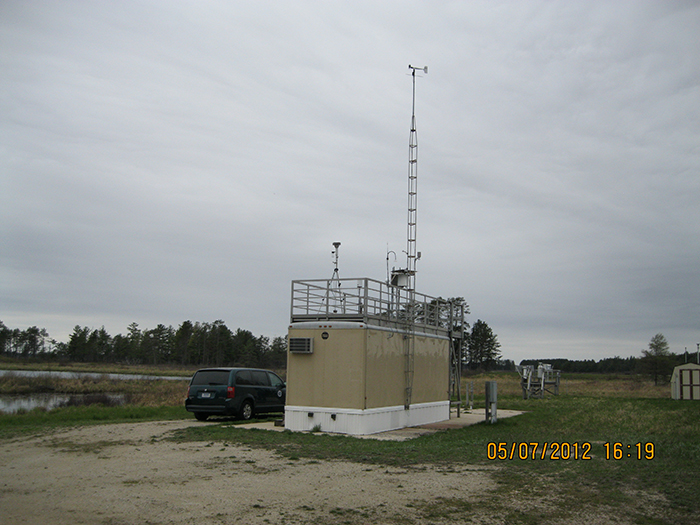By KURT WILLIAMS
Capital News Service
LANSING — Air quality in northern Michigan was bad on Jan. 21.
At least that’s what the weather app on Sharon Emery’s phone reported.
An ominous warning, “Unhealthy Air Quality for Sensitive Groups,” hung above the day’s current conditions of clear skies and 27 degrees.
Emery has a place in Cheboygan on the shore of Lake Huron. It’s not an area known for poor air quality, especially in winter.
People in Michigan move north to get away from air pollution.
Many mornings Emery checks the local forecast and that of friends and family. She often checks on Los Angeles because she has children living there.
“When the air quality in Cheboygan is worse than Los Angeles, then I know something is off,” she said.
It was. And to make matters more confusing, Emery’s weather app reported good air quality in Petoskey, just across the Lower Peninsula on Lake Michigan.
But air quality at Cross Village, just 25 miles north of Petoskey, was reported unhealthy, as was the air above Mackinac Island.
It turns out it was just bad information relayed to the public’s smartphones, not bad air quality that day.
The monitor that covers air quality in Cheboygan and Cross Village was malfunctioning, said Susan Kilmer, the Air Quality Division supervisor for the Department of Environment, Great Lakes and Energy.
Following routine maintenance of the sensor at the Upper Peninsula’s Seney National Wildlife Refuge, an erroneous reading made it look like there was a sudden dangerous rise in fine particulate matter, Kilmer said.
Fine particulate matter can be solid particles or liquid aerosols. They’re potentially dangerous to breathe because they’re small enough to enter deep into the lungs.
People with lung or cardiovascular disease, as well as the elderly and children, are especially vulnerable to the harmful effects of these particles.
Federal law requires the Environmental Protection Agency to monitor six pollutants – ozone, particulate matter, carbon monoxide, lead, nitrogen dioxide and sulfur dioxide.
EPA funds Michigan monitoring of these criteria pollutants under the Clean Air Act of 1970. The state maintains over 40 monitoring stations, including the one at Seney.
Not all criteria pollutants are monitored at all sites. The state continuously monitors particulate matter at the Seney site, as well as ozone during the warmer months from March 1 through Oct. 31.
Air quality information gets uploaded hourly to www.deqmiair.org, where it is publicly available in real time.
States also must report the data to the EPA’s AIRNow air quality mapping system. (www.epa.gov/airnow). That system is linked to the weather app on smartphones to alert the public of unhealthy air.
Given the time of year, Emery’s phone alert was for high particulate matter.
Kilmer said, “I think it’s a good thing for people to be aware of their environment and air quality.”
But she cautions that real time data is unvalidated, so glitches, though uncommon, can happen –even making Cheboygan’s air appear less healthy than that above Los Angeles.
Kilmer’s office received only a couple of phone calls as a result of the Seney monitoring snafu, she said.
People in urban areas with more frequent air quality issues often reach out to the state when alerts arrive at their phones, she said.
Even with the mistaken alert coming to her phone, Emery said she’s happy to have access to the information.
“People are at ground zero when it comes to air and water quality, so it’s important information,” she said.
Kurt Williams writes for Great Lakes Echo.
